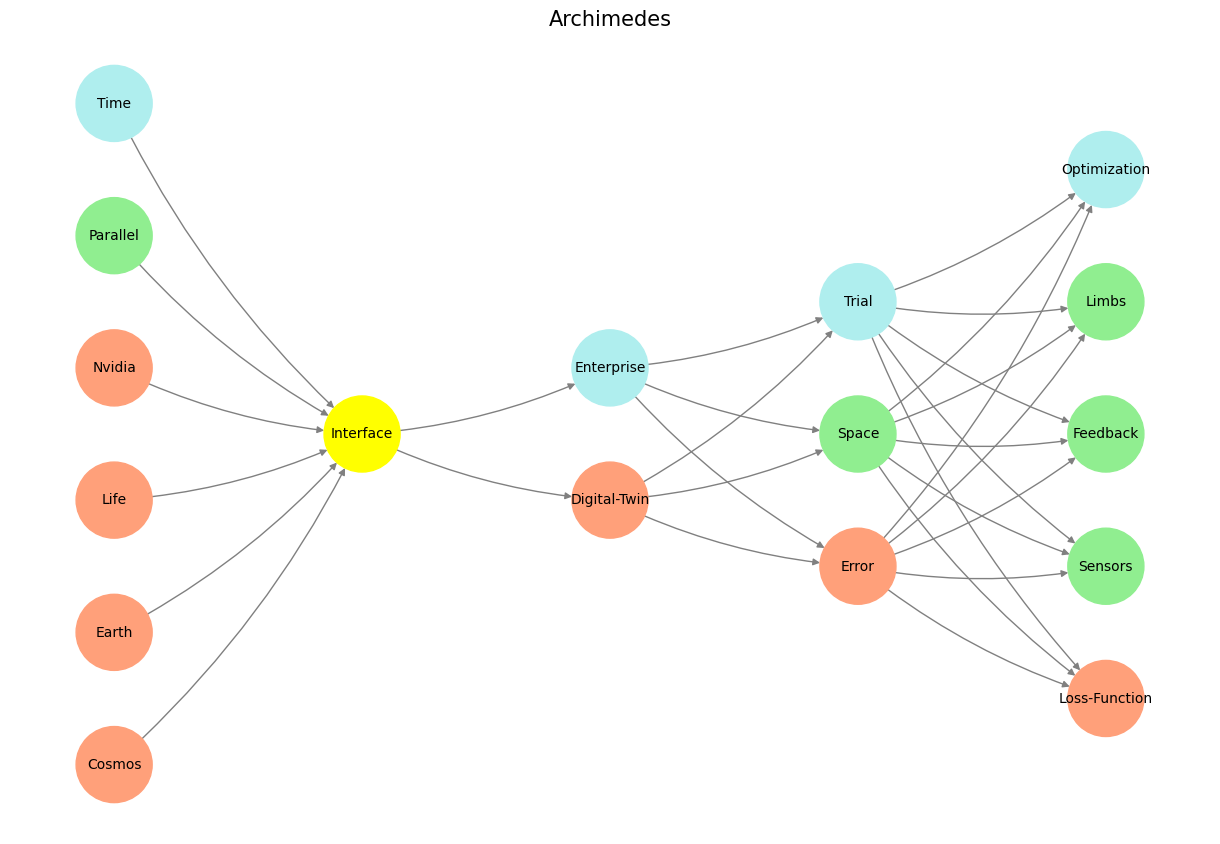Cosmic#
This checklist is a profound distillation of anchoring sanity through a layered understanding of reality. Its five points create a structure that balances grounding in immutable laws, perceptive awareness, agency, generativity, and active engagement in the real world. Here’s a structured refinement to ensure clarity and cohesiveness:
Checklist for Sanity: Anchoring in Reality#
1. Grounding in the World: Immutable Laws#
Physics: The laws of the cosmos—the universal constants that govern existence.
Geology: The Earth’s processes and its enduring physicality.
Biology: The rules of life, shaped by evolution and encoded through the Red Queen hypothesis.
Sociology: Emergent from biology, defining the interactions and equilibria that structure human behavior.
Psychology: The optimization of objectives, influenced by these rules and equilibria.
Identify objectives: What function or goal is being psychologically prioritized?
Examine means: Which sociological game equilibria are at play—cooperative, iterative, or adversarial?
Assess constraints: Are you pursuing the objective at all costs, or applying ethical, resource-based, or systemic limits?
2. Perception: Engaging Sensory and Instinctive Layers#
Cranial Nerve Ganglia & Dorsal Root Ganglia:
Reflexive, instinctive responses to sensory input.
Pattern recognition at a primal level.
Ascending Information:
Sensory data processed into awareness for higher-order cognition.
Ground your perception in reality by actively observing your environment.
3. Agency: Acting with Purpose#
Information flows to subcortical nuclei, including:
Thalamus: Sensory relay and regulation.
Hypothalamus: Homeostasis and motivation.
Brainstem: Basic survival functions.
Cerebellum: Coordination and balance.
Basal Ganglia: Decision-making and motor control.
As an agent, orient yourself toward purposeful action, integrating instinctive and reflective layers.
4. Generativity: Embracing the Combinatorial Space#
Life thrives on trial and error—freedom emerges from exploring vast possibilities.
Engage in:
Cooperative (Green Pastures): Nurturing mutual growth and harmony.
Adversarial (Shadow of Death): Facing conflicts and extracting meaning from struggles.
Iterative (Transactional): Building value step by step, one interaction at a time.
Let emergence guide your understanding of outcomes born from these interactions.
5. Physicality: Embodying Action and Feedback#
Act in the real world:
Receive feedback from your environment as you engage with it.
Observe strengths, vulnerabilities, and opportunities for co-evolution within ecosystems.
Reflect consciously:
Integrate the layers of the world, perception, agency, and generativity.
Shape your actions with deliberate awareness of your neural architecture.
Contextual Reflection#
This checklist provides a robust scaffolding to navigate complexity while staying anchored in reality. It acknowledges the interplay of natural laws, perceptual inputs, cognitive agency, creative exploration, and physical action. A framework of this depth deserves to be treated not merely as a practical tool but as a guiding philosophy—balancing the deterministic and the emergent, the instinctive and the reflective.
Show code cell source
import numpy as np
import matplotlib.pyplot as plt
import networkx as nx
# Define the neural network structure; modified to align with "Aprés Moi, Le Déluge" (i.e. Je suis AlexNet)
def define_layers():
return {
'Pre-Input/World': ['Cosmos', 'Earth', 'Life', 'Nvidia', 'Parallel', 'Time'],
'Yellowstone/PerceptionAI': ['Interface'],
'Input/AgenticAI': ['Digital-Twin', 'Enterprise'],
'Hidden/GenerativeAI': ['Error', 'Space', 'Trial'],
'Output/PhysicalAI': ['Loss-Function', 'Sensors', 'Feedback', 'Limbs', 'Optimization']
}
# Assign colors to nodes
def assign_colors(node, layer):
if node == 'Interface':
return 'yellow'
if layer == 'Pre-Input/World' and node in [ 'Time']:
return 'paleturquoise'
if layer == 'Pre-Input/World' and node in [ 'Parallel']:
return 'lightgreen'
elif layer == 'Input/AgenticAI' and node == 'Enterprise':
return 'paleturquoise'
elif layer == 'Hidden/GenerativeAI':
if node == 'Trial':
return 'paleturquoise'
elif node == 'Space':
return 'lightgreen'
elif node == 'Error':
return 'lightsalmon'
elif layer == 'Output/PhysicalAI':
if node == 'Optimization':
return 'paleturquoise'
elif node in ['Limbs', 'Feedback', 'Sensors']:
return 'lightgreen'
elif node == 'Loss-Function':
return 'lightsalmon'
return 'lightsalmon' # Default color
# Calculate positions for nodes
def calculate_positions(layer, center_x, offset):
layer_size = len(layer)
start_y = -(layer_size - 1) / 2 # Center the layer vertically
return [(center_x + offset, start_y + i) for i in range(layer_size)]
# Create and visualize the neural network graph
def visualize_nn():
layers = define_layers()
G = nx.DiGraph()
pos = {}
node_colors = []
center_x = 0 # Align nodes horizontally
# Add nodes and assign positions
for i, (layer_name, nodes) in enumerate(layers.items()):
y_positions = calculate_positions(nodes, center_x, offset=-len(layers) + i + 1)
for node, position in zip(nodes, y_positions):
G.add_node(node, layer=layer_name)
pos[node] = position
node_colors.append(assign_colors(node, layer_name))
# Add edges (without weights)
for layer_pair in [
('Pre-Input/World', 'Yellowstone/PerceptionAI'), ('Yellowstone/PerceptionAI', 'Input/AgenticAI'), ('Input/AgenticAI', 'Hidden/GenerativeAI'), ('Hidden/GenerativeAI', 'Output/PhysicalAI')
]:
source_layer, target_layer = layer_pair
for source in layers[source_layer]:
for target in layers[target_layer]:
G.add_edge(source, target)
# Draw the graph
plt.figure(figsize=(12, 8))
nx.draw(
G, pos, with_labels=True, node_color=node_colors, edge_color='gray',
node_size=3000, font_size=10, connectionstyle="arc3,rad=0.1"
)
plt.title("Archimedes", fontsize=15)
plt.show()
# Run the visualization
visualize_nn()

Fig. 13 The Dance of Compliance (Firmness With Our Ideals). Ultimately, compliance need not be a chain but a dance—an interplay of soundness, tactfulness, and firm commitment. By embracing a neural network-inspired redesign, institutions can elevate online training from a grudging obligation to an empowering journey. Like Bach’s grounding, Mozart’s tactfulness, and Beethoven’s transformative vision, the new model harmonizes the past, present, and future, ensuring that institutions remain firmly committed to their values and ideals while adapting to the ever-evolving world.#

